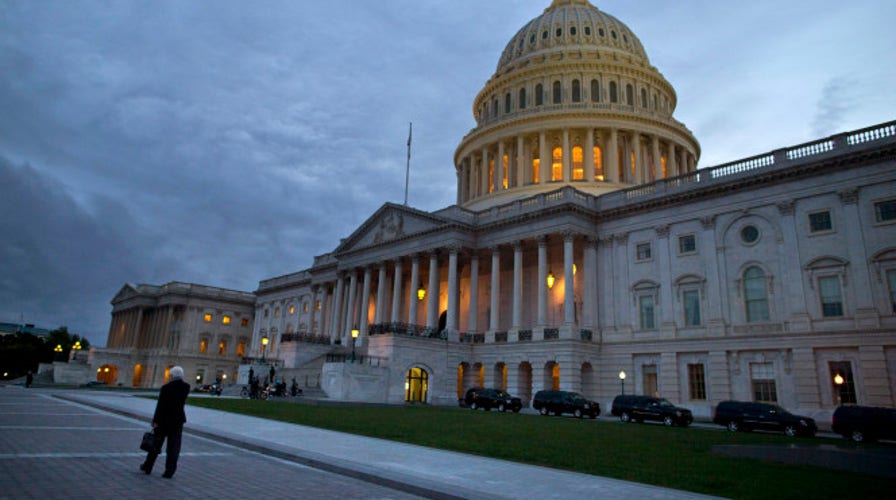Citizens against government waste release annual 'Pig book'
Doug McKelway reports from Washington, D.C.
The fire of anti-Washington sentiment that’s burning through the country this election season has found some new fuel in the latest Congressional Pig Book, an annual tome detailing federal government waste.
Citizens Against Government Waste, in their latest report, found that the cost of earmarks increased 21 percent from fiscal 2015, despite a 2011 moratorium on earmarks imposed by then-House Speaker John Boehner.
"Every two years when a new Congress comes around, the Republican conference has to vote again to establish a new moratorium, and there are 70 to 80 votes to keep earmarking," said CAGW President Tom Schatz. "Until there is a permanent ban on earmarks they can always creep back up as they have been over the last several years."
Among the expenditures flagged as waste: $40 million to upgrade the M1 Abrams tank, even though the Pentagon says the upgrade isn't needed or wanted.
"There are 2,000 of them parked in the desert and it's simply not something that they want to spend money on," Schatz said.
He adds while the M1 tank is assembled in Lima, Ohio, its suppliers are spread across the country, which helps to explain why it has broad congressional support.
Another expense uncovered by CAGW: $56.6 million for the High Intensity Drug Trafficking Areas program (HIDTA) at the Office of National Drug Control Policy.
It was originally intended for border states, but earmarks have now broadened the program to 10 states -- only two of which are on the border. Ironically, the Obama administration had targeted the program for $54 million in cuts for fiscal 2017 -- almost an exact inverse of the increase mandated by the congressional earmark.
In another example, Sen. Brian Schatz, D-Hawaii, managed to secure a $5.9 million earmark for The East-West Center in his home state of Hawaii. The State Department has long said the center -- founded in 1960 to promote better relations with Asia and the Pacific region -- was not needed. In a December 2015 press release, Schatz took credit for securing the $5.9 million earmark, noting it was $5.9 million more than the administration wanted.
CAGW singled out earmarks to the Department of Defense as particularly excessive. It cited $20 million for alternative energy research, an expenditure that House Armed Services Committee member Randy Forbes once scolded Navy Secretary Ray Mabus over in a 2011 hearing. "You're not the secretary of Energy, you're the secretary of the Navy," he said.
The Navy's "energy research" produced nothing in savings. To the contrary, CAGW cited figures from the office of Sen. John McCain who noted the Navy spent over $400 per gallon for 20,000 gallons of algae-based bio-fuel.
But CAGW says nothing has fleeced taxpayers as much as the most expensive weapons program in history -- the F-35 Joint Strike Fighter.
Now four years behind schedule and $170 billion over budget, the F-35 program was unique in that its development and procurement occurred simultaneously. The unforeseen effect was that as numerous problems were identified, changes had to be made to aircraft already in production.
The release of the Congressional Pig Book overlapped Thursday with a House Oversight and Government Reform Committee hearing on a new Government Accountability Office report on government inefficiency. It found 92 new actions that the federal government could take to improve operations.






















